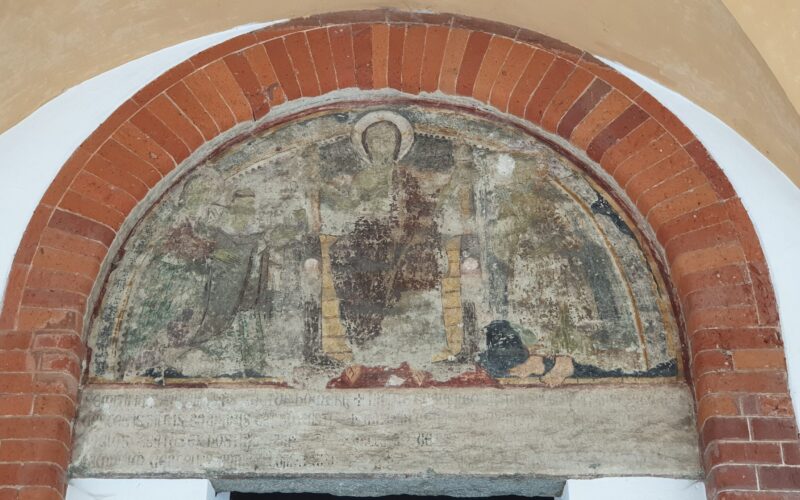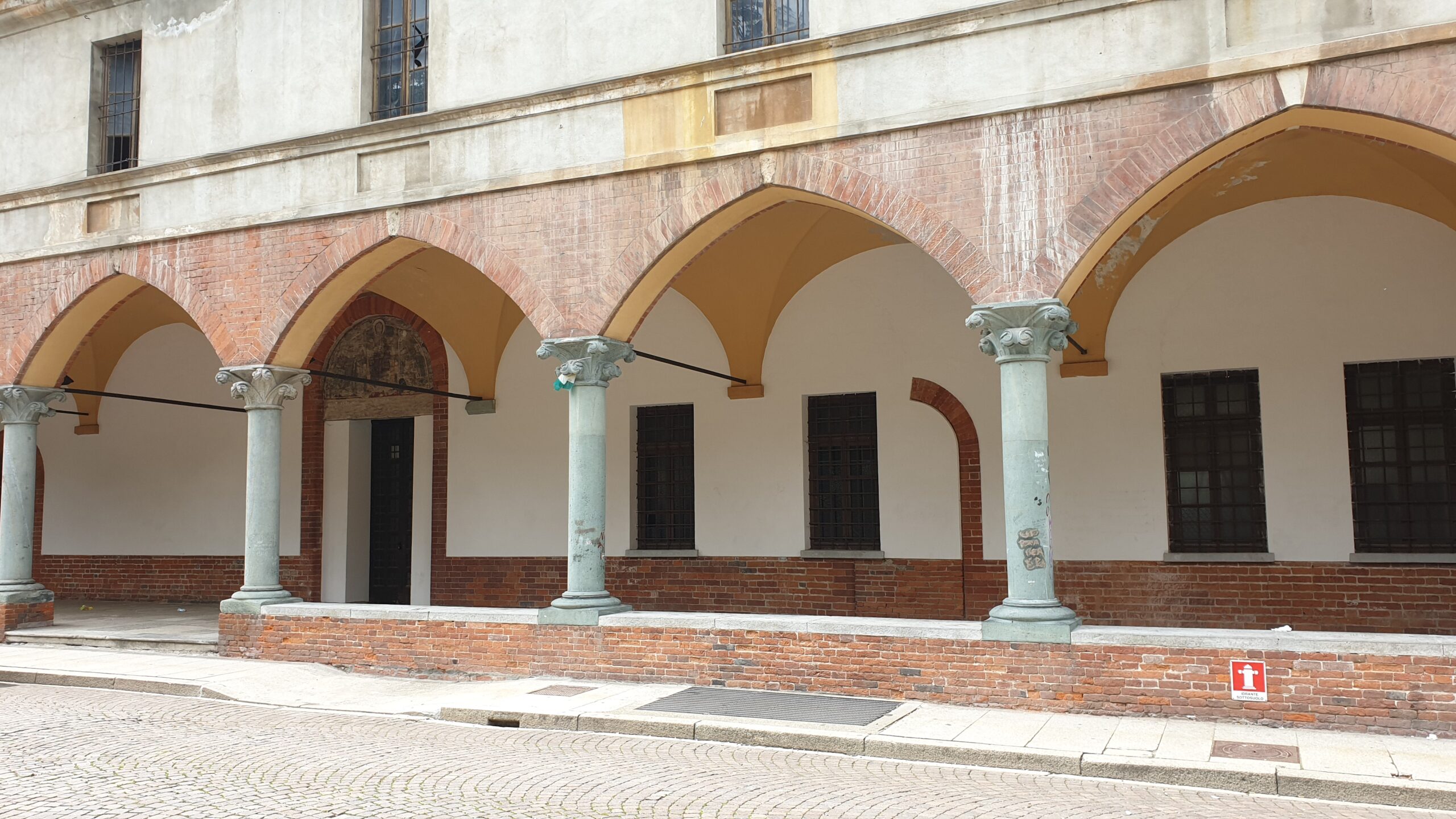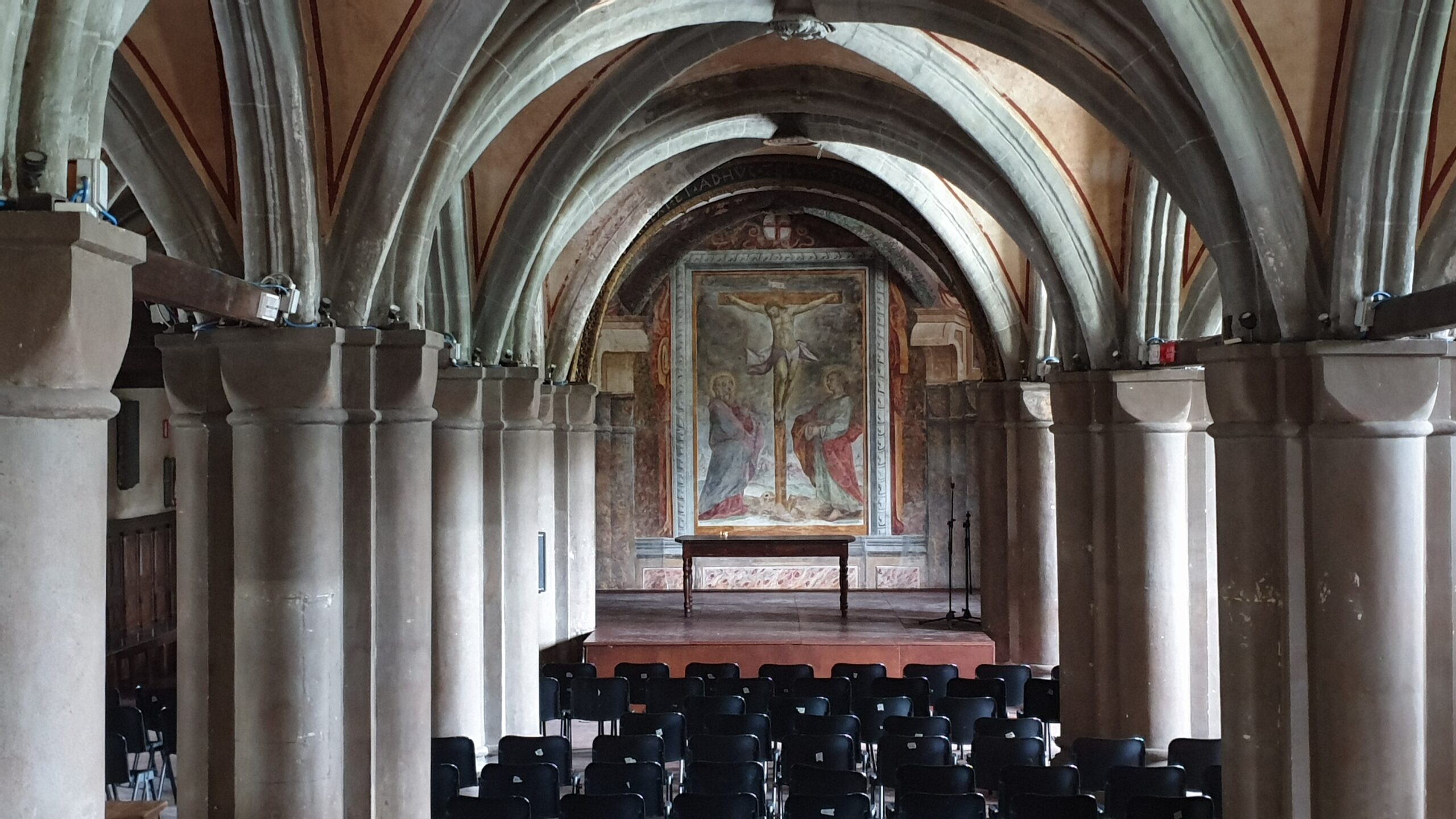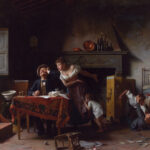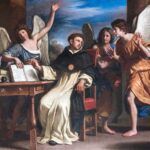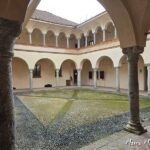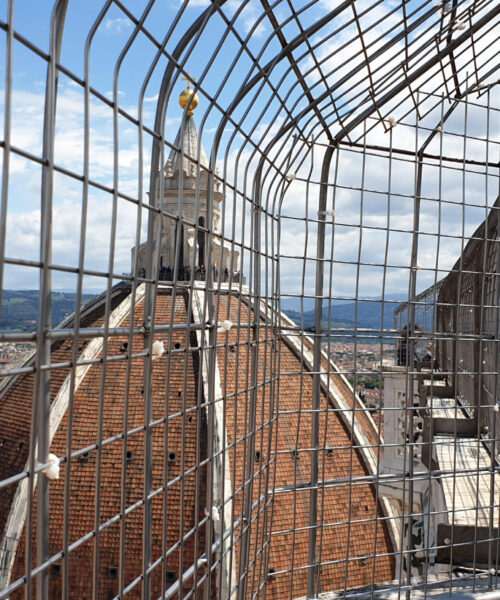Above one of the portals of the Salone Dugentesco in Vercelli, the ancient hospital founded in the 13th century by Cardinal Guala Bicchieri, there is a painted lunette that, despite the passage of centuries, still tells a fascinating story. The lunette, though in precarious condition, offers a captivating image: Saint Andrew, Saint Peter, and the cardinal himself are depicted in a richly symbolic iconography. Guala Bicchieri, with his bearded face and lavishly decorated robe, is shown offering the Basilica of Saint Andrew to Christ.
The façade of the Salone Dugentesco, once a hub of activity and care, still echoes the grandeur and devotion of a distant era. The painting, unfortunately almost illegible in some parts, allows us to glimpse the cardinal’s features, immortalized in an act of deep devotion and pride.
Below this sacred scene, on the stone door’s architrave, an inscription composed of elegant Latin verses can be read. This ode to Cardinal Guala is a tribute to his work, praising his dedication to the clergy and his fame:
Semita iusticie iudicari doctus Homeri
Inclite Guala nequit tua splendida fama taceri
Vercellis natus Romanus cardo fuisti
Ad Francos missus regnum bene disposuisti
Anglos legatus ex hostibus eripuisti
Ecclesiamque (Petri devotam) restituisti
Templum Vercellis Andree constituisti
(Preceptoremque) ecclesie (Tomam) instituisti
Illustrious Guala, your splendid fame cannot be silenced
Born in Vercelli, you were a pivot of Rome
Sent to the Franks, you well organized the kingdom
As legate, you rescued the English from their enemies
And restored the church (devoted to Peter)
You built the temple of Saint Andrew in Vercelli
And (appointed) Thomas as preceptor of the church
This inscription is not just praise but a true journey through the culture and spirituality of the time. Each verse celebrates Guala Bicchieri’s wisdom and dedication, showing how his work was seen as a divine gift.
Inside the Salone Dugentesco, the medieval atmosphere envelops visitors, transporting them to a time when art and faith were inseparably linked. The painted scene in the lunette was created over an earlier version, of which we unfortunately do not know the exact iconography. However, it is assumed that it was similar to the current one, with Saint Andrew on the right and Guala Bicchieri on the left, always in the act of offering the model of the church.
A fascinating hypothesis suggests that the repainting occurred after 1231, the year when Pope Gregory IX placed the hospital of Saint Andrew under the direct protection of the Holy See. This theory would explain the inclusion of Saint Peter’s figure alongside Saint Andrew, a tangible sign of the new papal protection.
Every detail of this pictorial narrative adds a piece to understanding the history of the Salone Dugentesco and its significance. The discovery and preservation of these works are essential not only to keep historical memory alive but also to allow future generations to appreciate the cultural richness of our past.
Thus, the painted lunette of the Salone Dugentesco in Vercelli is not just a work of art but a bridge between different eras, a vibrant testimony to the devotion and mastery of those who came before us.

